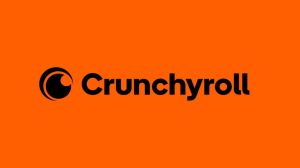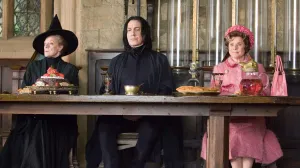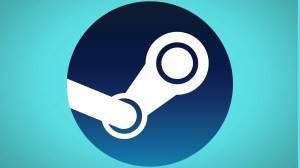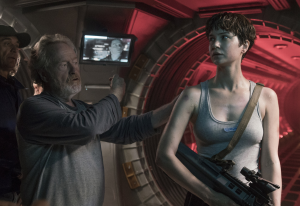Like most things in life, Taco Bell has had its fair share of ups and downs. Menu items come, only for us to fall in love with them right as they’re snatched from our grasp. Most of the time, we’re not allowed to say goodbye. Call it the “circle of life,” if you will. And yet amidst all of the menu changes through the years, one thing has remained constant — MTN DEW Baja Blast.
Videos by ComicBook.com
In the late ’90s, long before the Crunchwrap Supreme, Doritos Locos Taco, or a certain turquoise elixir found their way to the menu of the national taco joint, Taco Bell was in the middle of a down stretch. Even though it was the lone fast-food taco spot categorized as a national chain at the time, sales began to take a drastic dip towards the end of the millennium.
Before long, anyone from the C-level executive suite down the line to entry-level marketers put their heads together to figure out what to do. What could possibly save the chain from despair?
Enter, Baja Blast.
Once folks moved past their Y2K worries and settled into a new age, Taco Bell began to turn the corner, ever so slowly. They launched their chicken quesadilla in 2001 with a massive ad campaign featuring one Jeff Bezos, but they weren’t quite in the clear yet. Shortly after the chicken quesadilla launched, the company’s former chief marketing officer Greg Creed and his team noticed an alarming trend happening at Taco Bell locations across the country.
People — more specifically, teens, a coveted demographic amongst marketers — weren’t ordering drinks with their food. Instead, they were getting in the habit of getting their Taco Bell and returning home where they’d pop open a can of soda or bottle of water they already had hanging around. Believe it or not, marketers even have a name for what was going on at the time — “drink incidence.”
The problem there is that restaurants make a good chunk of their money with soft drinks. Whether it’s a Michelin-star destination, Guy Fieri’s Vegas Kitchen, or Taco Bell and similar fast-food spots, the biggest profit margins come with drinks.
“We tried to get to the bottom of why that was, and the answer was because a lot of young people, teenagers, young adults, their response was, ‘Well, I’ve got a free drink at home because mom and dad have been out to Walmart or Costco or Kroger,’” Creed recalls.
To reverse the trend, the Taco Bell marketing team came up with an idea that was practically unheard of at the time — a proprietary soft drink. The group needed something to draw people into the store, so Creed and his team pulled something we’ll call the “Ultimate Costner.” Though no fast-food restaurant had taken the leap into exclusive soft drinks, Taco Bell quickly shifted its culture to “build it and they will come.” If the Taco Bell team was able to craft a drink available nowhere else, surely people would arrive in droves.
In 2002, a conversation was started with Pepsi, the beverage-maker with exclusive drink rights to the entire Taco Bell chain. At one point, Pepsi and Taco Bell were both under the Yum! umbrella, before the drink-maker took Frito-Lay and its massive portfolio of drink brands to become its own company. Some remnants of corporate synergy still floated about, and Taco Bell hoped to take that and combine it with the fact that the chain remained one of the few national fast-food restaurants to pour Pepsi products. Surely, Taco Bell thought, Pepsi would take the plunge hand-in-hand with the chain.
Unfortunately for Creed and company, it wasn’t going to be as easy as hoped. Pepsi quickly shut down the proposal at first glance. Most people at the company thought it was an impossible task to undertake. They’d have to turn over facilities and dedicate an incredible amount of resources to something that had never been done for a partner, and some execs with Pepsi thought it could fall flat on its face if Taco Bell wasn’t able to put in the promotional legwork.
Another concern Pepsi shared was the fact that giving Taco Bell their own flavor could anger some other customers, setting a dangerous precedent where any restaurant serving Pepsi would clamor for their own exclusive beverage.
“I remember actually being in the meeting,” Creed says of the time Pepsi rejected his proposal. “They were like, ‘Yeah, no. I don’t really think so. We don’t really do that, and you guys will probably only support it for like six months, and then it’ll go away, and it’s a lot of work.’”
Creed’s response was nice and succinct, “Yeah, that’s not a good answer.”
Since Taco Bell was now a separate company, they could theoretically drop Pepsi for Coca-Cola. As it turns out, it’s a common business practice in the world of fast food to reassess beverage contracts once every 10 years or so. Though Taco Bell had graciously poured Pepsi for quite some time, there would be one day that beverage evaluation would return.
Creed persisted and, before long, the right people were convinced to get on board with what was then an unidentified Taco Bell soda. As one Pepsi insider tells us, the collaboration was too advantageous for all involved, that’s why the beverage-maker ended up taking the leap into the unknown.
Dave Burwick — PepsiCo’s chief marketer from 2002 to 2005 — says that, ultimately, losing the partnership wasn’t worth the risk.
“I can’t remember the moment when we decided we would do it, but they were very persistent, I remember that,” Burwick recalls. “And we thought, ‘You know what? We can justify this because Taco Bell and Mountain Dew go so well together and [Taco Bell is] willing to do so much behind this, that I don’t think any other customer’s going to be willing to do what they’re going to do.”
An agreement was made, and Taco Bell would soon have its very own beverage. The drink would only be available in Taco Bell stores, with the exception of one caveat — in an attempt to reach the widest audience possible, Taco Bell agreed to let Pepsi release some 20 million cans and bottles through the bottler’s regular distribution channels. For a limited time, the drink would be available outside of Taco Bell; partially so Pepsi could treat it as a regular drink and see how it performs, and partially to help drive traffic back into Taco Bell restaurants.
Nonetheless, the companies were off to the races. Despite some initial pushback, Taco Bell was now set to make history as the first fast-food chain to have an exclusive soft drink. Even better yet, Creed and his company instantly knew the Pepsi brand they were going after.
Every step of the way, Taco Bell had its eyes set on a proprietary MTN DEW. The beloved drink was a top seller at the restaurant. Coincidentally enough, DEW had recently begun to experiment with new flavors outside the typical Diet or Zero Sugar fare; by the time Taco Bell’s beverage got the official greenlight, MTN DEW Code Red had been on the market for a full year and the cherry-flavored DEW had quickly become a fan-favorite.
The stars were slowly aligning for Taco Bell, but the question remained — could they execute?

At the time, executives from PepsiCo and Taco Bell took part in an annual event they called a “top-to-top meeting,” an excursion that allowed top brass to take a workcation in some exotic locale around the globe. The 2003 trip took Creed and his team to Cabo San Lucas, and it was during this workcation the drink finally got a name.
Despite the pressures of a mammoth undertaking weighing on their shoulders, those spearheading the marketing and development of the Taco Bell drink went out to play a round of golf. It must have been a pretty good day because Creed says the entire group was having a jolly, good ol’ time.
Little did they know the name for their proprietary MTN DEW flavor would soon come in the middle of a day out on the links.
As one does in a post-COVID world, we caught up with Creed via Zoom, and his eyes light up as he recounts the story about how the Baja Blast name came to life. You see, Cabo San Lucas is located at the southernmost point of Mexico’s Baja peninsula, and everyone at the event was having a blast.
“We’re doing some legitimate work. I don’t want everyone to think it was just a boondoggle,” Creed cautiously says, even though the twinkle in his eyes says otherwise.
“Basically, we are in the Baja Peninsula having a blast, because we were having a fantastic time with our friends at PepsiCo,” he adds. “And we go, ‘We should call it Mountain Dew Baja Blast.’”
Creed says he can’t recall who first shouted the name out, but admits that once it was brought to light, it was a unanimous decision all around. Their drink, henceforth, should be called “MTN DEW Baja Blast.” The executive does, however, take credit for the nectar’s glistening color — one that was crafted to mimic the crystal-clear Cabo waters right off the peninsula.
One trip to Cabo later, and the foundation of the new soda brand had been poured — but they still needed the drink in hand.
It’s here Creed makes sure to point out that Taco Bell doesn’t consider itself to sell Mexican food. Rather, the restaurant pushes food inspired by traditional Mexican fare. As such, he says the flavor profile of the soda needed to reflect that. In addition to the name and color drawing inspiration of Mexico’s Baja peninsula, Taco Bell eventually decided to use lime as a foundational flavor building block to the drink, the citrus fruit that often finds itself a common ingredient amongst Mexican dishes.
Once Taco Bell laid the groundwork, it was soon up to PepsiCo’s research and development team to take the regular MTN DEW recipe and craft something new, specifically with the lime flavor. Luckily for all parties involved, the infrastructure was now there. DEW had recently altered its formula for Code Red and was simultaneously working on Live Wire, a summer-themed orange drink. By the time Baja Blast entered real development, Pepsi was even beginning to lay the groundwork for MTN DEW Pitch Black.
From the time Pepsi received the go-ahead on what flavor profile needed developed, Burwick says it took about nine months to get something ready for release. “Part of it was just trying to figure out, ‘Can we do this?’” he recalls.
“We wanted to make sure something was very distinct. We had Code Red and Live Wire out there, already,” Burwick adds. “And it can’t be the same flavor profile that we already have, it’s got to be something that’s really unique.”
Since Live Wire was an orange flavor and Baja Blast was to be lime, there was a concern the citrus flavors could be too close to each other. Luckily, the scientists at Pepsi were able to concoct something just different enough to become a major hit.
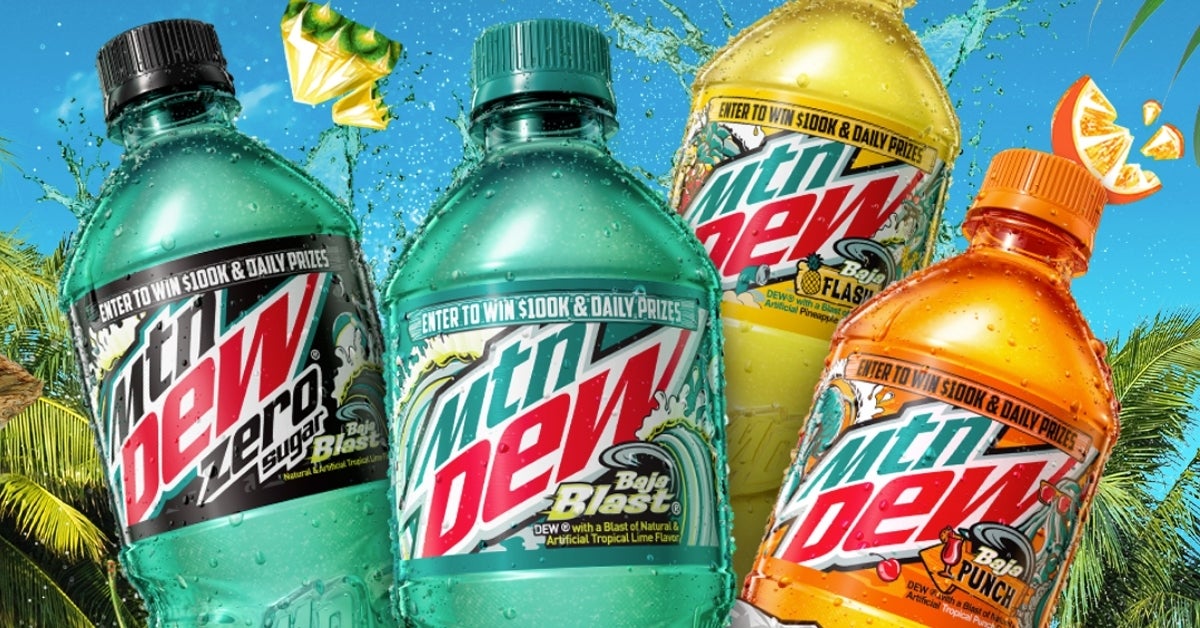
Fast forward to 2004, and Taco Bell is ready to release Baja Blast to the masses, they’ve got their deal in place and are ready to upset the status quo, which seems to be the case with a marketer such as Creed. In fact, others we spoke to say the former Taco Bell CMO was known to take risks, going so much as to call him an incredibly bold decision-maker, and one of the most creative marketers in the game.
Creed first bounced around from Pizza Hut to KFC to PepsiCo and Unilever before landing at Taco Bell as its CMO in 2001. Throughout our chat, you can tell the launch of Baja Blast is something he enjoys talking about, and if you wait long enough, he’ll even tell you it’s one of the brightest spots of his career.
He goes the length to call it his “firstborn” in the world of marketing. The risk and the bold decision to relentlessly pursue a proprietary drink for Taco Bell likely ended up as the best professional decision he ever made.
Shortly after launch, Baja Blast became a favorite amongst many — DEW drinkers, Taco Bell frequenters, and most people that came into contact with it. Now, some 17 years later, it’s as popular as ever and continues providing strong numbers to this very day. Baja Blast is routinely a top seller for the chain, even besting Pepsi some months.
As Creed details, Taco Bell has moved more Baja Blast each year the drink has been in existence.
“I don’t know the exact numbers, but it has grown. Its volume has grown every year in the last 17 years. It has sometimes grown faster than Taco Bell has grown as a brand, which means there is this massive loyal following to MTN DEW Baja Blast,” he expresses. A Taco Bell spokesperson confirmed with ComicBook.com that Baja Blast is currently the chain’s top performing beverage.
“It’s become this kind of cult brand,” he quickly points out. He’s not wrong there. In fact, it might even be a bit of an understatement.
There are massive online fan communities dedicated to the MTN DEW brand and its wide portfolio of flavors. On Reddit, there’s an active community of 14,000-plus people that share their daily DEW hauls, or their rare finds; there’s even a Discord server with nearly 4,000 members around the globe that feverishly shares details on where some of DEW’s most rare flavors pop up.
Commonplace amongst all the chatter is Baja Blast, one of the most popular profiles under the DEW brand.
“Part of the reason Baja is my favorite, totally because it reminds me of good times and nostalgia, but something about the flavor keeps me coming back,” one Redditor tells us. “It’s a tropical flavor and it’s simple but it works so well.”
That avid soda drinker says it’s the perfect DEW flavor for Taco Bell. “I’ve had plenty of amazing DEWs since I started trying more flavors about two years ago, and there’s just something about it that hasn’t been broken through yet.”
Another on the message board says Baja Blast is best because it complements anything you need to pair it with. “You can drink it with food or no food, and it’s still good,” they say. “You can drink it at a summer party as a non-alcoholic beverage and it just feels [like] summer drinking it.”
The rabid fan response has led to a new agreement between MTN DEW and Taco Bell that allows Baja Blast to be bottled and canned during the summer months. The response has been so popular, the turquoise beverage is getting its own “spinoffs” for the first time since its release.
As a part of the brand’s 100 Days of Baja promotion this summer, two new flavors are hitting retailers in addition to Baja Blast’s summer release: Baja Punch, Baja Blast with added punch flavors, and Baja Flash, Baja Blast with “Pineapple Coconut” flavors.
For what it’s worth, Creed hasn’t the slightest issue with DEW riffing on the drink he helped to create. “Imitation is the finest form of flattery,” he jokes.
Even outside the world of soft drinks, the marketing exec’s decision to take the leap with Baja Blast paid off dividends for both him and the restaurant. The executive says that without Baja Blast, there would be no Doritos Locos Tacos, a collaboration between Taco Bell and Frito-Lay, another PepsiCo-owned brand.
“I think we demonstrated with Baja Blast that we respected [the Pepsi] brands. We would never do the wrong thing by their brands. We did all the right things by their brand,” Creed adds. “I’m convinced if we had not made Baja Blast, there would be no Doritos Locos Tacos because it’s one thing to let us play with Mountain Dew. It’s another thing to let us play with Doritos.”
That means if Baja Blast didn’t become such a runaway hit, Taco Bell would be without one of its biggest products ever. Creed tells us in its first year on the market, the Doritos Locos Taco ended up netting the restaurant around $1 billion. Priced at $1.49 per, that means somewhere around 671,141,000 Doritos Locos Tacos were sold in its first year on the Taco Bell menu — exceptional results for an introductory product, Creed says.
He even says the same leap of faith required with Baja Blast ended up encouraging internal innovation, attributing the creation of the Crunchwrap Supreme to risk-taking and breaking the norms. Suddenly, what started off as a proprietary beverage quickly became three of the chain’s most popular products to date.
Three years after Baja Blast debuted, Creed became Chief Operating Officer for Yum! Brands, the parent company behind Taco Bell, KFC, and Pizza Hut. He kept that role for 11 months before Taco Bell hired him on as President, a role he kept until he was promoted to Taco Bell CEO in 2011. Eventually, the marketing cavalier landed atop Yum!. Creed served as CEO for the entire umbrella from 2015 until his retirement in 2019.
Soon, MTN DEW Baja Blast turns 18 and becomes the third-longest tenured MTN DEW flavor outside the regular, Diet, and caffeine-free family. Even nearly two decades after Baja Blast was first released, it still holds a heavy place in Creed’s heart. He calls it his baby and still makes sure to get a cup of it on a weekly basis.
“My wife’s like, ‘You do realize you’re now 63, and you probably shouldn’t be drinking 40 ounces drink of sugar drinks,’” Creed says with a chuckle, pointing out his standard go-to beverage is a Diet Pepsi.
“It’s funny, I don’t drink coffee or tea, but I drink a lot of Diet Pepsi except when I go to Taco Bell, when I’ll have a Baja Blast. So, my wife’s like, ‘God forbid if we ever turn up, and the machine isn’t working.’”
As for Creed himself? He now resides in the greater Dallas area with his wife. Though he’s technically retired, he serves on the board for Whirlpool, Aramark, and Black Ridge Oil and Gas. Then he just launched Creed UnCo, a consulting firm that says it’s an unconventional, understandable, unobtrusive, and uncompromising alternative to a regular business consultant.
On top of that all, he still finds the time to head to Taco Bell twice a week because, come hell or high water, he’s got to get his Baja Blast fix.




